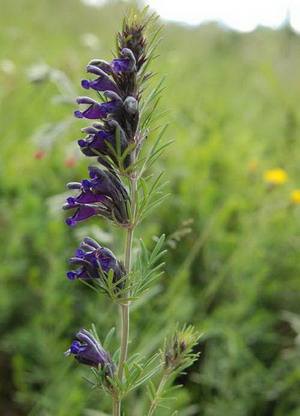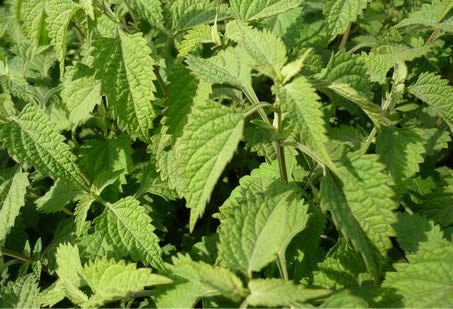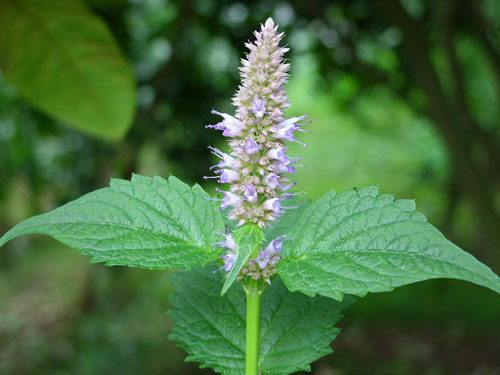- Liliaceae
- Lamiaceae
- Euphorbiaceae
- Leguminosae
- Zingiberaceae
- Chloranthaceae
- Campanulaceae
- Asteraceae
- Acanthaceae
- Orchidaceae
- Polygonaceae
- Ranunculaceae
- Vitaceae
- Rubiaceae
- Solanaceae
- Thymelaeaceae
- Saururaceae
- Moraceae
- Polypodiaceae
- Myrtaceae
- Araceae
- Adiantaceae
- Schisandraceae
- Amaranthaceae
- Berberidaceae
- Araliaceae
- Taxaceae
- Cucurbitaceae
- Apiaceae
- Guttiferae
- Scrophulariaceae
- Papilionaceae
- Caprifoliaceae
- Elaeagnaceae
- Apocynaceae
- Brassicaceae
- Papaveraceae
- Gentianaceae
- Paeoniaceae
- Lauraceae
- Punicaceae
- Nyssaceae
- Ephedraceae
- Gnetaceae
- Polygalaceae
- Violaceae
- Ginkgoaceae
- Cupressaceae
- Dipsacaceae
- Eucommiaceae
- Juglandaceae
- Dryopteridaceae
- Rosaceae
- Huperziaceae
- Caryophyllaceae
- Rhamnaceae

Dracocephalum tanguticum
- Introduction
- Download
Blast
Dracocephalum tanguticum Maxim, a Lamiaceae species mainly distributed in high altitude mountain areas in western China. It has been recorded in Tibetan medicine standardas one of the most common Tibetan medicine used for the treatment of hepatitis, gastritis, dizziness, arthritis, and ulcer
Year: 2017
Institution: Medicinal Plants Research Centre, Tibet Agricultural and Animal Husbandry College, Nyingchi, 860000, China
Material: Tibet, China
Download:
http://www.herbal-genome.cn/index.php?m=content&c=index&a=show&catid=100&id=124

Herbaceous perennial
- Introduction
- Download
Blast
Herbaceous perennial native to China. Short, basil-like plants. The entire plant is used. Source of diterpenoic molecules oridonin and rebescenin, which have been shown to inhibit the growth of cancerous tumors. The herb improves digestion, inhibits inflammation and has been used as a specific for treating breast cancer.
Year:2016
Institution:Pharmacognosy Discipline, College of Pharmacy, Henan University of Traditional Chinese Medicine, Zhengzhou, Henan
Material: Henan, China
Data link:http://www.herbal-genome.cn/index.php?m=content&c=index&a=show&catid=100&id=16

Salvia miltiorrhiza
- Introduction
- Download
Blast
Salvia miltiorrhiza, also known as red sage, Chinese sage, tan shen, or danshen, is a perennial plant in the genus Salvia, highly valued for its roots in traditional Chinese medicine. Salvia miltiorrhiza has been widely used in China and, to a lesser extent, in Japan, the United States, and European countries for the treatment of cardiovascular and cerebrovascular diseases. In China, Salvia miltiorrhiza (alone or combined with other Chinese herb medicine) was applied to the treatment of variety of diseases such as angina pectoris, myocardial infarction, hypertension, hyperlipidemia, and acute ischemic stroke.
1
Year:2010
Institution:Institute of Medicinal Plant Development, Chinese Academy of Medical Sciences
Material: Shandong, China
2
Year:2011
Institution:Key Laboratory of Ministry of Education for Medicinal Resources and Natural Pharmaceutical Chemistry, Shaanxi Normal University
Material: Shaanxi, China
3
Year:2013
Institution:National Key Laboratory of Plant Molecular Genetics and National Center for Plant Gene Research, Institute of Plant Physiology and Ecology, Shanghai Institutes for Biological Sciences, Chinese Academy of Sciences
Material: Anhui, China
4
Year:2014
Institution:Department of Biochemistry, Biophysics & Molecular Biology, Iowa State University
Material: Shanxi, China
5
Year:2016
Institution:College of Life Sciences, Northwest Agriculture & Forestry University, Yangling, Shaanxi, People's Republic of China,
Material: Shangluo, China
Data link:http://www.herbal-genome.cn/index.php?m=content&c=index&a=show&catid=100&id=15

Pogostemon cablin (Blanco) Benth
- Introduction
- Download
Blast
Pogostemon cablin (Blanco) Benth, herbs or subshrubs, perennial, aromatic. Stems erect, 30-100 cm tall. Fl. Apr. Fujian, Guangdong, Guangxi, Hainan, Taiwan, India, Indonesia, Malaysia, Philippines, Sri Lanka] Cultivated in China. Source of patchouly oil, an essential oil obtained from the leaves and used in soaps and perfumes. Employed in scenting carpets and shawls. It is also used medicinally.
Year:2016
Institution:South China Botanical Garden, Chinese Academy of Sciences
Yunnan Agricultural University
Material: Wuhan, China
Data link:http://www.herbal-genome.cn/index.php?m=content&c=index&a=show&catid=100&id=14